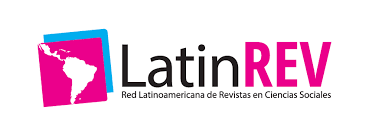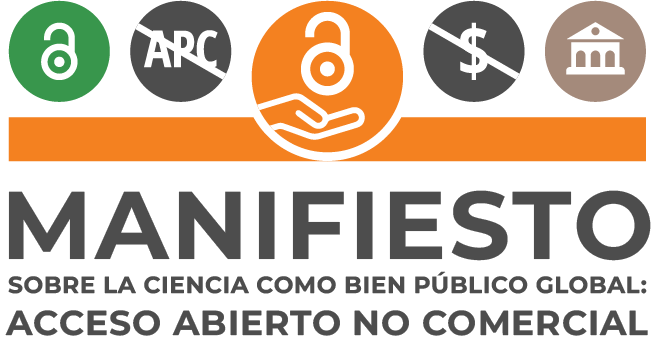Comparison of marginal adjustment of crowns with direct scanning in typodont and plaster model
DOI:
https://doi.org/10.69789/creaciencia.v16i1.679Keywords:
dental scanner, digital crowns, artificial parts, plaster model, metal-porcelain, El SalvadorAbstract
Introduction. Technological development has allowed the emergence of digital dentistry, as in the case of dental scanners. Objective. To verify the existence of statistical differences in the marginal fit of digital crowns made with direct scanning of preparation on a typodont and of plaster models. Methodology. Quantitative, analytical and experimental laboratory approach, cross-sectional and prospective, involving 16 preparations for metalporcelain crowns made on acrylic teeth for typodont. Results. The scanning procedure was performed on a MEDIT i500 scanner, obtaining a first study group; subsequently, a plaster model scan was obtained to form a second group. Both processes resulted in a total of 32 scanned preparations. The scan was performed 10 times in the typodont and the same number of timesin the plaster model; three measurements were obtained for each dental surface from each preparation. The non-parametric Mann-Whitney U test was used to compare the marginal fit of crowns. Under controlled conditions, scanning of the model obtained with analog impression was achieved, which did not show a statistically significant difference compared to direct scanning of dental preparations. Conclusion. There are many studies that agree with the results obtained, but several articles also show the superiority of digital impressions compared to analog ones, demonstrating the need to continue investigating under different conditions that influence the results with both scanning processes.
References
Kang B.-h., Son K; Lee K.-b. Accuracy of Five Intraoral Scanners and Two Laboratory Scanners for a Complete Arch: A Comparative In Vitro Study. Appl Sci [Internet]. 2020 [citado 2022 Ago];10(1):74. Disponible en: https://doi.org/10.3390/app10010074
Villagrán Hernández D. Características de las técnicas de impresión digital, para prótesis dental [tesis de licenciatura]. Ciudad de México (México): Biblioteca Central, Universidad Nacional Autónoma de México; 2014. 51 p. Disponible en: http://132.248.9.195/ptd2014/noviembre/0721646/Index.html
Abduo J, Elseyoufi M. Accuracy of Intraoral Scanners: A Systematic Review of Influencing Factors. Eur J Prosthodont Restor Dent [Internet]. 2018 Ago 30 [citado 2022 Ago];26(3):101–21. Disponible en :https://www.researchgate.net/publication/326328319_Accuracy_of_Intraoral_Scanners_A_Systema tic_Review_of_Influencing_Factors
The Academy of Prosthodontics, The Academy of Prosthodontics Foundation. The Glossary of Prosthodontic Terms: Ninth Edition. J Prosthet Dent [Internet]. 2017 May [citado 2022 Ago];117(5S):e1–e105. Disponible en: https://doi.org/10.1016/j.prosdent.2016.12.001
Medina-Sotomayor P, Ordóñez P, Ortega G. Precisión de los sistemas de impresión digital intraoral en odontología restauradora: Una revisión de la literatura. Odovtos [Internet]. 2021 Abr [citado 2022 Ago 21];23(1):64–75. Disponible en: http://dx.doi.org/10.15517/ijds.2020.41442
Barrendero Dávila S. Estudio comparativo de un sistema de impresión convencional y elsistema digital Trios® [tesis doctoral]. Madrid: Universidad Complutense de Madrid; 2016. 300 p. Disponible en: https://hdl.handle.net/20.500.14352/22450
Carrillo Vaca DG, Astudillo Ortiz JL. Precisión de las impresiones digitales intraorales: una revisión de literatura. Revista Odontología Universidad Central de Ecuador [Internet]. 2021 Jul 30 [citado 2022 Ago];23(2):e3446. Disponible en: https://revistadigital.uce.edu.ec/index.php/odontologia/article/view/3446/4206
Schweiger J, Beuer F, Edelhoff D. Flujo de trabajo digital, 1.ª parte. Del escaneo intraoral a la confección del modelo. Quintessence técnica [Internet]. 2011 Abr [citado 2022 Sep];22(4):223–30. Disponible en: https://www.elsevier.es/es-revista-quintessence-tecnica-33-articulo-flujo-trabajo-digital-1-parte-- X1130533911028242
Cortes ARG. Digital versus Conventional Workflow in Oral Rehabilitations: Current Status. Appl Sci (Basel) [Internet]. 2022 Abr 7 [citado 2022 Sep];12(8):3710. Disponible en: https://doi.org/10.3390/app12083710
Carvalho CF, Zamboni SC, Maciel SB, Nogueira Junior L. Adaptación marginal de restauraciones cerámicas inlay de dos sistemas cerámicos después de su cementación. Revista Estomatológica Herediana [Internet]. 2008 Jul–Dic [citado 2022 Jul 10];18(2):105–13. Disponible en: https://www.redalyc.org/articulo.oa?id=421539350006
Hernández Sampieri R, Fernández Collado C, Baptista Lucio P. Metodología de la investigación. 6.ª edición. México D. F.: McGraw-Hill Education; 2014.
Veiga de Cabo J, de la Fuente Diez E, Zimmermann Verdejo M. Modelos de estudios en investigación aplicada: conceptos y criterios para el diseño. Med Segur Trab (Madr) [Internet]. 2008 Mar [citado 2022 Jul 20];54(210):81–8. Disponible en: https://scielo.isciii.es/scielo.php?script=sci_arttext&pid=S0465-546X2008000100011
W&H Dentalwerk [Internet]. [Lugar de publicación desconocido] W&H Dentalwerk; © 2012-22. Turbinas Alegra. Fiables, eficientes y precisas; [citado 2022 Ago]; [aproximadamente 5 p.]. Disponible en: https://www.wh.com/es_global/productos-dentales/restauracion-protesis/turbinas/alegra/
Schaefer O, Schmidt M, Goebel R,Kuepper H. Qualitative and quantitative three-dimensional accuracy of a single tooth captured by elastomeric impression materials: an in vitro study. J Prosthet Dent [Internet]. 2012 Sep [citado 2022 Sep];108(3):165–72. Disponible en: https://doi.org/10.1016/S0022- 3913(12)60141-3
Ng J, Ruse D, Wyatt C. A comparison of the marginal fit of crowns fabricated with digital and conventional methods. J Prosthet Dent [Internet]. 2014 Sep [citado 2022 Sep];112(3):555–60. Disponible en: https://doi.org/10.1016/j.prosdent.2013.12.002
Chochlidakis KM, Papaspyridakos P, Geminiani A, Chen CJ, Feng IJ, Ercoli C. Digital versus conventional impressions for fixed prosthodontics: A systematic review and meta-analysis. J Prosthet Dent [Internet]. 2016 Ago [citado 2022 Sep];116(2):184–90.e12. Disponible en: https://doi.org/10.1016/j.prosdent.2015.12.017
Tabesh M, Nejatidanesh F, Savabi G, Davoudi A, Savabi O, Mirmohammadi H. Marginal adaptation of zirconia complete-coverage fixed dental restorations made from digital scans or conventional impressions: A systematic review and meta-analysis. J Prosthet Dent [Internet]. 2021 Abr [citado 2022 Sep];125(4):603–10. Disponible en: https://doi.org/10.1016/j.prosdent.2020.01.035
Caparroso Pérez CB, Marín Muñoz DV, Echavarría Velásquez A. Adaptación marginal y ajuste interno en estructuras de zirconia-ytria elaboradas con los sistemas CAD/CAM Procera® y Cerec in-Lab®. Rev Fac Odontol Univ Antioq [Internet]. 2011 Jul 15 [citado 2022 Jul 10];22(2):186–97. Disponible en: https://revistas.udea.edu.co/index.php/odont/article/view/7464/8881
Anadioti E, Aquilino SA, Gratton DG, Holloway JA, Denry I, Thomas GW, Qian F. 3D and 2D marginal fit of pressed and CAD/CAM lithium disilicate crowns made from digital and conventional impressions. J Prosthodont [Internet]. 2014 Dic [citado 2022 Ago];23(8):610–7. Disponible en: https://doi.org/10.1111/jopr.12180
Abdel-Azim T, Rogers K, Elathamna E, Zandinejad A, Metz M, Morton D. Comparison of the marginal fit of lithium disilicate crowns fabricated with CAD/CAM technology by using conventional impressions and two intraoral digital scanners. J Prosthet Dent [Internet]. 2015 Oct [citado 2022 Ago];114(4):554–9. Disponible en: https://doi.org/10.1016/j.prosdent.2015.04.001
Tsirogiannis P, Reissmann DR, Heydecke G. Evaluation of the marginal fit of single-unit, complete coverage ceramic restorations fabricated after digital and conventional impressions: A systematic review and meta-analysis. J Prosthet Dent [Internet]. 2016 Sep [citado 2022 Ago];116(3):328–335.e2. Disponible en: https://doi.org/10.1016/j.prosdent.2016.01.028
Quaas S, Loos R, Rudolph H, Luthardt RG. Randomized controlled trial comparing direct intraoral digitization and extraoral digitization after impression taking. Int J Prosthodont [Internet]. 2015 Jan– Feb [citado 2022 Ago];28(1):30–2. Disponible en: https://pubmed.ncbi.nlm.nih.gov/25588169/ DOI: 10.11607/ijp.3455
Güth JF, Keul C, Stimmelmayr M, Beuer F, Edelhoff D. Accuracy of digital models obtained by direct and indirect data capturing. Clin Oral Investig. 2013 May [citado 2022 Ago];17(4):1201–8. Disponible en: https://doi.org/10.1007/s00784-012-0795-0
Downloads
Published
Issue
Section
License

This work is licensed under a Creative Commons Attribution-NonCommercial-ShareAlike 4.0 International License.
Los artículos de Crea Ciencia están publicados en acceso abierto bajo una licencia CC BY-NC-SA 4.0 de la Universidad Evangélica de El Salvador.





















